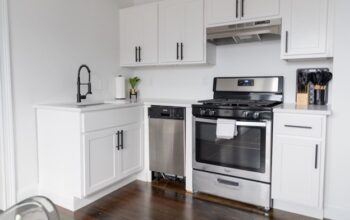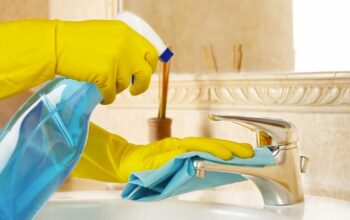Not only can water damage ruin your valuables and furniture, it can also damage your home – and become very expensive.
If you are able to act quickly, you can minimize the damage and possibly save some of your possessions.
The success of water damage restoration really depends on how long the flood water has been left untouched. It is important to check furniture that can be saved, and sometimes even rugs, but any electronics affected by water are probably doomed in the trash.
Don’t Treat Flood Waters Lightly
Even if your basement has only an inch of water, or even if it’s just damp, this is the perfect breeding ground for mold.
Mold growth ruins walls, furniture, carpets, flooring, etc., but it can also lead to poor air quality causing respiratory problems including asthma or other serious illnesses.
Preventing mold growth is the key to keeping the air in your home clean and healthy.
So in addition to calling your insurance company, here are some tips for dealing with your flooded basement and minimizing water damage. Before you do anything, call your insurance company and tell them what you want to do.
Here are some steps to take if you have suffered water damage to your home:
Disconnect the electricity. Unplug all electronics and immediately remove all appliances, furniture, and items that you may move.
The faster you remove the items from the water, the more likely you are to save them. Remove all rugs (tapestries and rugs) and under laments. You might be able to save your rugs if you have them cleaned and sanitized.
Get rid of the water. There are several ways to get rid of water. Use old towels, buckets, and brooms to soak up as much water as possible.
As long as the sewers in your neighborhood aren’t blocked, you can pour the water down the drain, if not, pour it onto your lawn or another permeable surface. A wet/dry vacuum can also be used. Getting rid of all the water and drying the area is the most important thing you can do to prevent mold growth.
Dry the affected area. Once you’ve mopped up all the water, use fans and a dehumidifier to help dry the area. If it’s not raining, leave the windows open to allow air circulation and faster drying.
You want the area to dry as quickly as possible. If you have a finished basement and the drywall has been affected, you will likely need to cut off areas that have been affected by water as the drywall will crumble and the paper backing is a good source of relief. food for mold.
If you have baseboards, do this first, and if they’re made from compressed lumber, they probably won’t be salvageable. If they were made of wood, you might be able to save them.
Disinfect. After drying the area including wooden beams, insulation, drywall, etc., use a good disinfectant to get rid of any bacteria that may have come through sewers, toilets, etc.
Prevent mold growth. After disinfecting and letting the area dry completely, apply the disinfectant along the affected area following the directions.
Once you have applied a thin layer, let it dry overnight. When dry, it forms a thin protective layer over any mold that might grow and it kills the roots of the spores.
No matter where it is sprayed, it will prevent any mold from growing, providing continued resistance. If you are spraying an entire room, you may want to consider renting a fogger from a hardware store such as Home Depot. It is easy to use and very fast.
Assessment of Water Damage
Specialized companies don’t have to destroy everything to assess the situation. They use special tools, such as a hygrometer to get an accurate and instantaneous reading of the moisture content of materials and thermal cameras to delineate affected areas.
Professionals then assess the level of contamination of materials and structures, taking into account the history of the building, as older damage may be hidden behind the coatings (long-term degradation is not possible). Covered by insurance).
Several types of material can be dried out, others must be discarded, especially if there are category 2 or 3 soilings.
Partitioning the disaster area is sometimes necessary to prevent contamination from spreading to the rest of the house. The same goes for heating, ventilation, and air conditioning systems. In this case, high-efficiency filters (HEPA) are installed.



